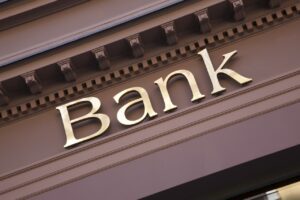What is open banking?
Open banking is a new financial framework. This framework uses APIs (application programming interfaces) to allow users to securely share their financial data, like banking information, transaction history, or other relevant data. APIs’ standardization process also makes it easier to share data with third-party service providers, like fintech companies, payment apps, or even other banks.
Through open banking, users can access new financial services, budgeting tools, payment services, submit loan applications, aggregate their accounts on one platform, and more. In terms of security, the user needs to provide explicit consent for third-party providers to access their financial information.
How does open banking work?
APIs:
Open banking relies on APIs, which are secure digital interfaces. Different banks, fintech apps, or tools would work on different kinds of software. The job of an API is to allow these different systems to “talk to each other” and share data safely.
This is a main benefit of open banking, as current options in Canada for fintech and financial apps do not use secure API systems. Around nine million Canadians currently share financial data with service providers by giving them their confidential banking credentials.
User consent:
To use the services and benefits offered by open banking, users need to explicitly authorize access for third-party providers. Without this, they cannot access your data. However, you may not benefit from all the services they offer, since some of the tools and solutions they provide are based on accessing and analyzing your data. You can revoke access anytime as well.
This is much better than the current method of “screen scraping”. This is what most fintech apps in Canada use to access your financial data from banks and other financial institutions. It works by using your own credentials, where you provide your online banking username and password. The app “scrapes” your information and transfers it to its own systems. It then uses your credentials to log into your bank account, so your bank thinks you’ve logged on.
Security:
Open banking is based on secure frameworks, with strict regulatory oversight. Third-party providers are to be accredited. The system will have strong data protection measures. The Canadian government is also in the process of developing a framework of regulations. This protects you to a greater degree with online transactions, data privacy, and secure digital banking.
Screen scraping, on the other hand, can be risky because it has access to all your data and login credentials. This goes against most banks’ terms of service, which explicitly prohibit sharing your credentials. It’s a big security issue for banks, and by violating the terms of service, you could be held responsible for losses and may not be protected against unauthorized transactions.
Data sharing:
All data sharing will be based on consumer consent. Once you provide explicit access, third parties can then access your specific financial data. They will be able to then provide services tailored to you and your spending patterns, your transaction history, etc. Financial institutions can offer personalized budgeting, faster credit access, streamlined payments, and more.
Compared to screen scraping, you have much more choice over what information is shared with the third-party apps. There, the app has your login credentials and hence, has access to ALL your data, whether you want it to have access or not. With open banking, it’s your choice how much information to share and for how long.
Open banking around the world
Many countries like the UK, Australia, Singapore, Brazil, and some EU countries already have open banking frameworks in place. Users have secure ways to share their financial data and access to innovative and competitive service offerings. In comparison, things have been going slowly in Canada.
In fact, the federal government wanted to introduce open banking over five years ago. They are taking a cautious approach, trying to find the most appropriate governance models and define the scope of the regulatory framework. In addition, large Canadian banks seem hesitant to proceed. It is likely that they may be wary of losing market share, since open banking makes it easier for people to switch to competitor services. Since the government is taking the careful route to planning the frameworks, there is not much pressure on banks to fall in line either. In Europe and Australia, consumer demand and regulatory mandates helped speed up the process. Canadians are hoping to catch up soon!
Open banking in Canada
Open banking is currently not fully available in Canada. The process is ongoing, and the Canadian government is also developing a regulatory framework. The goal is full implementation of the first phase by early 2026. Open banking is expected to increase transparency and innovation in the financial sector, benefiting consumers and businesses.
Canada is aiming for an open banking setup where the government puts forth legislative frameworks. The government introduced the Consumer-Driven Banking Act and is developing supporting regulations. The Financial Consumer Agency of Canada (FCAC) is the designated lead agency and will be responsible for overseeing the framework. The financial industry will manage the implementation, with the phase 1 rollout expected to begin by 2026. It will begin with federally regulated banks above a certain size.
Benefits for Canadians
Greater control and choice
Canadians will have secure control over their financial data, and they can easily share information with authorized banks and third-party services of their choice. You can then access more services and features than what your primary bank offers.
Moving between financial products will be easier, like switching checking accounts or credit cards. This ease will lead to banks and financial institutions offering better rates, lower fees, improved service and more competitive offers that benefit the end user.
Personalized financial management
With open banking, Canadians can use innovative apps and services that help budget, automate savings, manage debt, and plan finances. You would have access to tools that can analyze your spending patterns and offer personalized advice based on that. This can help people stay on top of their finances, identify their patterns, and make smarter spending decisions.
It will also allow you to see a consolidated financial overview. The ability to view all your accounts and transactions in one place makes it easier to manage money. You could use these tools and resources to pay off your debt, pay off student loans, save for an emergency fund, save for a down payment, and so much more.
Improved Finances
Open banking will make it easier to compare products, switch providers, and set up autopayments across different banks and financial institutions. It can also help Canadians save time and reduce the hassle of switching. Accounts could be transferred between banks seamlessly. You could also get instant loan approvals or credit access. This saves time and effort, and reduces paperwork!
Key takeaways
Open banking is about making financial services work better for users. It is a massive undertaking with the goal of providing better options and financial management strategies to Canadians. Open banking gives greater control to users and makes it easier to switch between products or even institutions. It can also lead to innovation in the financial industry, as financial institutions will have to create competitive offers and provide a user-friendly experience.
With added security and more access to choice, you can make decisions that are right for you. Having everything in one place will create more transparency, so you can manage your money better. With tools and services for money management, you can do everything from paying off debt to saving for a down payment on a new home. If you’re currently dealing with debt, you can contact one of our trained credit counsellors for advice on debt solutions that are the right fit for your needs.




